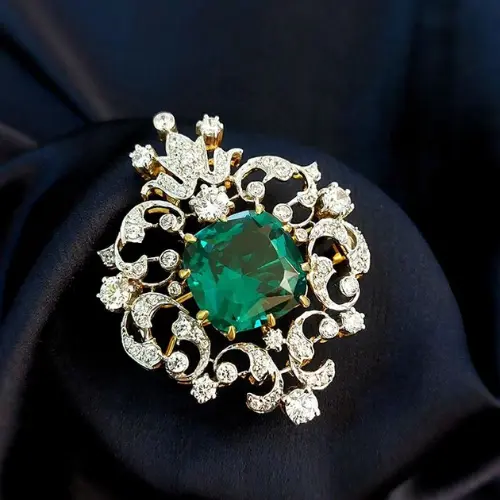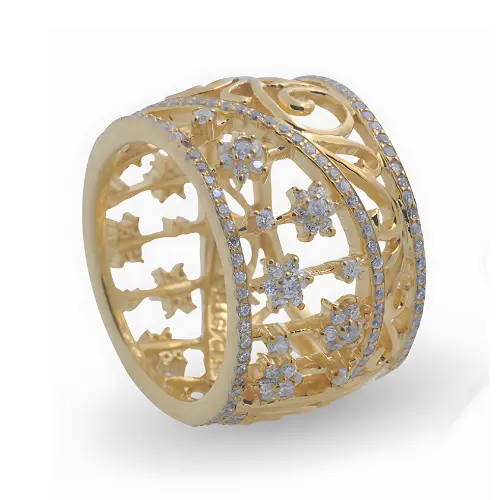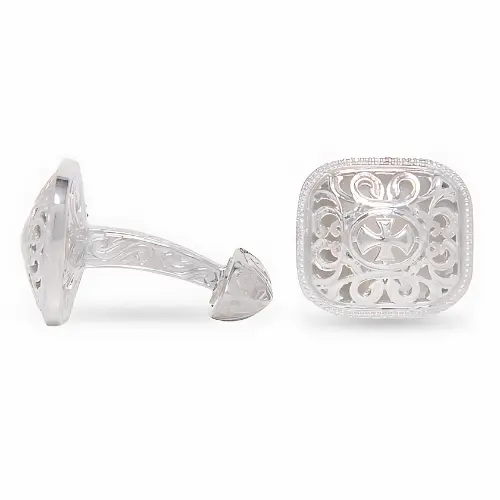
Filigree work in jewelry is an ancient and intricate art form that has captivated the world for centuries. This delicate and elaborate technique involves twisting and soldering fine threads of gold, silver, or other metals into intricate patterns. The result is a piece of jewelry that is both lightweight and visually stunning, showcasing the artisan's skill and creativity. From antique heirlooms to modern masterpieces, filigree continues to enchant and inspire jewelry lovers around the globe.
History
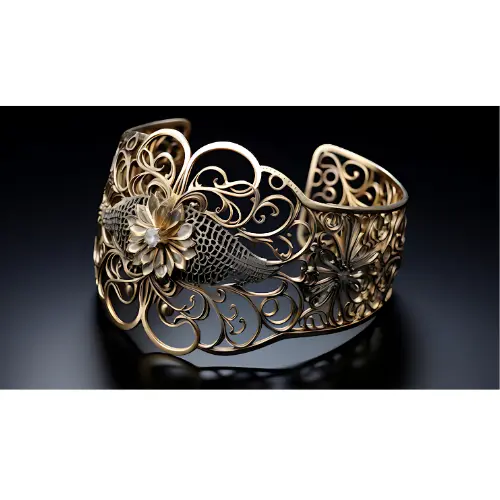
The earliest examples of filigree were discovered by archaeologists in ancient Greece and Mesopotamia, dating back over 5,000 years. The term filigree is derived from the Latin words "filum" (thread) and "granum" (grain), referring to the thin metal strips used in its creation. This intricate craft spread through Europe and Asia, becoming particularly popular among the Romans throughout their empire.
Our modern perception of filigree jewelry emerged in French fashion from the late 1600s to the 1800s, gaining significant prominence during the Art Deco period. During this time, detailed scrollwork and lacy designs created stunning motifs in various types of jewelry. Pieces from this era are highly prized today, regarded as exceptional works of both jewelry and art.
While filigree is most commonly associated with jewelry, it has also been utilized in crafting iron railings and household items like plates, bowls, lamps, and light fixtures. Since filigree involves the manipulation of metal, a wide range of metals, including gold, silver, platinum, copper, and iron, have been used to create beautiful filigree pieces.
The Filigree Technique
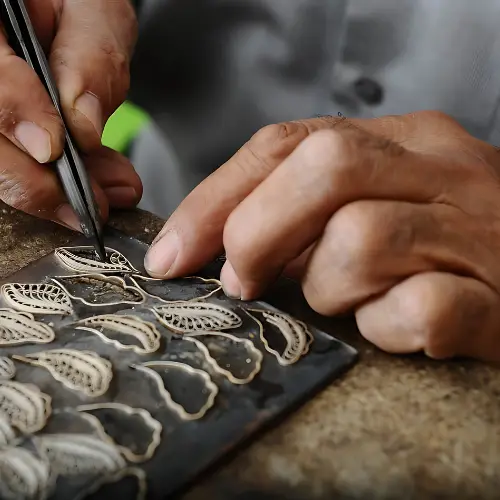
Creating filigree jewelry is a meticulous and time-consuming process that requires a high degree of skill and precision. Here are the basic steps involved:
1. Designing: The process begins with a detailed sketch of the desired pattern. This serves as a blueprint for the filigree work.
2. Wire Preparation: Fine metal wires are drawn to the desired thickness. The wires are then twisted together or flattened, depending on the design requirements.
3. Shaping: The twisted wires are carefully shaped into intricate patterns using specialized tools. This step requires steady hands and a keen eye for detail.
4. Soldering: The shaped wires are soldered together at their contact points to form a cohesive piece. This is done with great precision to ensure the joints are secure without compromising the delicate appearance of the filigree.
5. Polishing: The finished piece is polished to enhance its shine and highlight the intricate patterns.
Open Work Filigree And Milgrain
Openwork filigree, characterized by spaces between the intricate designs, is a common technique in antique jewelry, particularly seen in brooches, watch bands, bracelets, and pendants. This method often incorporates another ancient design technique called milgrain. Milgrain involves applying tiny metal beads to jewelry to create decorative borders. When combined with filigree, milgrain adds dimension, texture, and sparkle, enhancing the overall beauty of the piece.
Cultural Significance

Filigree work is not just a testament to the artisan's skill; it also holds cultural and symbolic significance in many societies. In India, for example, filigree jewelry is often associated with traditional bridal wear and is considered a symbol of purity and elegance. Similarly, in Portugal, filigree is an integral part of the country's rich cultural heritage, with craftsmen in regions like Viana do Castelo continuing to produce stunning pieces that reflect their ancestral techniques.
Modern Filigree Jewelry
While filigree jewelry boasts ancient origins, it maintains a strong presence in contemporary fashion. Today's jewelers often blend traditional filigree techniques with modern designs, resulting in pieces that are both classic and fashionable. From intricate filigree earrings to elaborate necklaces, these creations add a touch of sophistication to any ensemble.
One notable aspect of filigree's enduring popularity is its usage in bridal jewelry. Brides often opt for filigree pieces due to their intricate patterns and lightweight construction, which offer a perfect balance of tradition and modernity. Furthermore, filigree settings provide an ideal showcase for gemstones, enhancing their natural beauty.
While the traditional process of crafting filigree involves intricate handiwork, modern technology has streamlined the process for some jewelers. Laser cutting technology, developed in the 1960s and utilized in jewelry making since 1965, has revolutionized the industry. This technology allows for precise metal cutting, eliminating the need for starting with metal strips and providing artisans with more efficient means of achieving intricate designs.
Filigree work in jewelry is a testament to the enduring allure of intricate craftsmanship. Its rich history, cultural significance, and timeless beauty continue to captivate jewelry enthusiasts around the world. Whether in an antique heirloom or a contemporary creation, filigree jewelry remains a symbol of elegance and artisanal excellence. As we celebrate this remarkable art form, we also honor the skilled artisans who keep this tradition alive, weaving threads of history into every delicate piece.
You May Also Like,
THE TIMELESS ELEGANCE AND INTRICATE CRAFTSMANSHIP OF BELLE EPOQUE JEWELRY
UNVEILING THE ART OF WIRE WRAPPING IN JEWELRY: CRAFTING BEAUTY WITH SKILL AND PRECISION
EXPLORING THE ALLURE OF ART DECO JEWELRY
